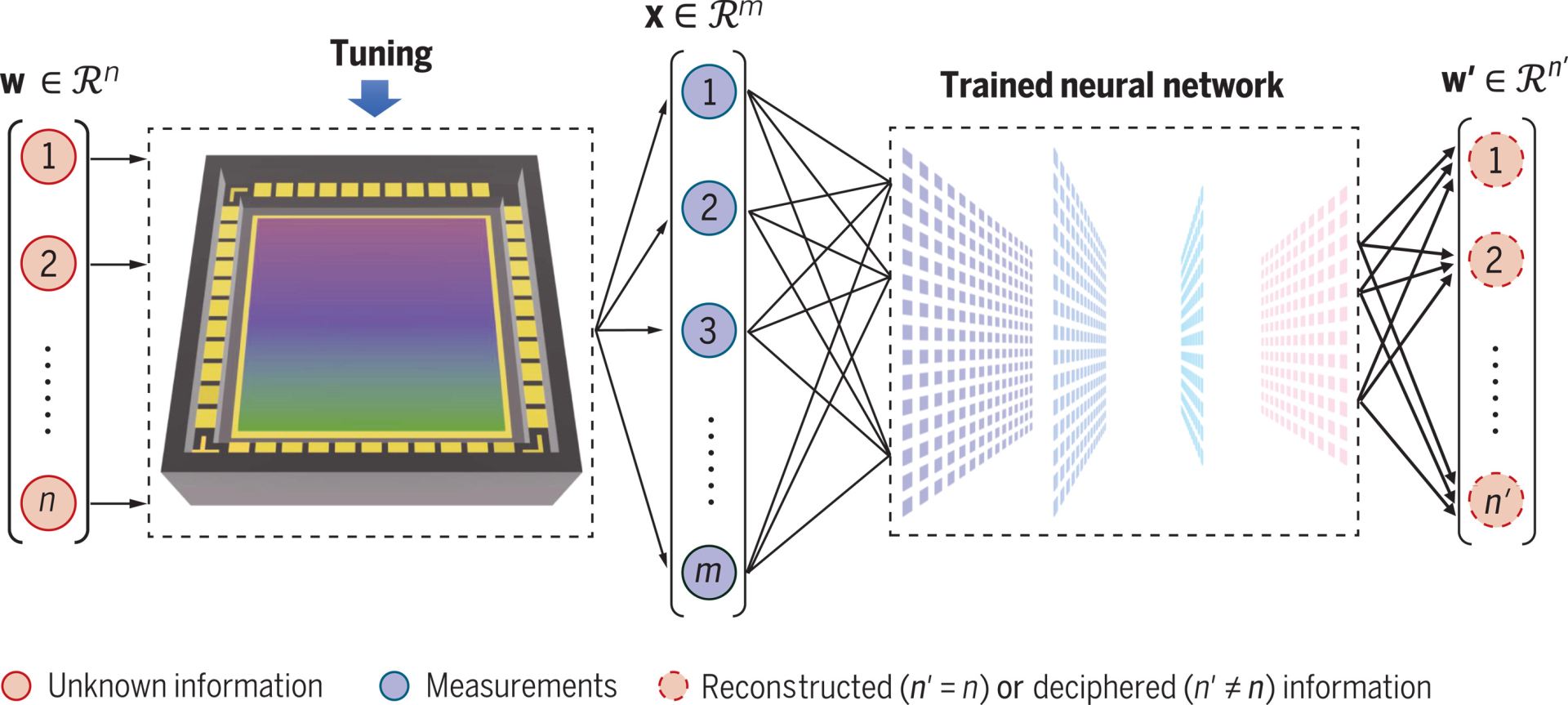by Caryn Berardi and Carly Orewiler

A University of Texas at Dallas scientist who studies 2D materials and intelligent chips recently published a review article in Science highlighting an emerging field that he has been pioneering — geometric deep optical sensing — an innovative scheme that could revolutionize the way we capture, process and utilize the information of light.
Dr. Fan Zhang, a professor in the Department of Physics, together with scientists from Yale, Bar-Ilan, and Vienna, believe the future of optical sensing is rapidly approaching, Innovations in device architecture, discoveries of new 2D materials, demonstrations of novel optoelectronic phenomena and advances in deep-learning algorithms are giving life to extraordinary technologies.
Optical sensing devices have long been used to measure the physical properties of light, such as power, polarization, spectrum and wavelength. They can be found in cameras, radars, GPS, computers, etc., but they are traditionally mono-functional, bulky and inefficient.
“Now, synergizing advances in 2D materials and deep learning, both the classical and quantum information of an unknown light can be encoded into a unique nonlinear optical response map,” Zhang said. “We can train convolutional neural network models to decode all the information simultaneously and instantaneously,” Zhang said.

This intelligent, ultra-compact, multi-functional sensing scheme, invented by Dr. Zhang, his former student Dr. Patrick Cheung (PhD’22), and their experimental collaborators at Yale, was first demonstrated with infrared light. The groundbreaking idea was reported in an article published in Nature last year and patented with the assistance of the UT Dallas Office of Technology Commercialization this year.
“Infrared sensing is crucial in many scenarios,” Zhang said. “For example, in the Hubble Space Telescope and in pulse oximeters. Other broad applications are in medical imaging, environmental monitoring, infrared astronomy, and our daily lives, especially in the mobile domain and the Internet of things.”
Previously, Zhang’s group focused on infrared light with a small set of frequencies, but moving forward, his goal is light beam that has any continuous spectrum.
“Our work here at UT Dallas has laid the foundation to make optical sensing intelligent,” he said. “This is a multifaceted field that still needs a lot more explorations, but we are confident about the emergence of a disruptive technology in the future.”
Help us leave the planet a better place for future generations. Your support for the School of Natural Sciences and Mathematics funds scientific discoveries with real-world applications, student and faculty recruitment, and academic scholarships.